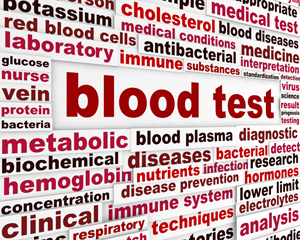Test Talk: Hemoglobin A1C
Collection requirements and diagnostic value
by Dennis Ernst • January 07, 2019

Hemoglobin A1c, also known as glycohemoglobin or glycosylated hemoglobin, is increasingly used to assess and diagnose diabetes. Physicians use it as a reflection of the average amount of glucose in the blood over the last several months. Hence, fasting is not required prior to collection.
The predominant form of hemoglobin within red blood cells is hemoglobin A. As glucose circulates, it spontaneously binds to hemoglobin A making it glycohemoglobin, or glycosylated hemoglobin. The glucose that attaches remains bound for the life of the red blood cell. Therefore, the higher the level of glucose in the blood, the more glycosylated hemoglobin exists in the red blood cells. The predominant form of glycosylated hemoglobin is A1c.
Not only is hemoglobin A1c used to screen for and diagnose diabetes, it's also used to monitor treatment for those with diabetes. Nondiabetics typically have levels below 5.7% (39 mmol/mol). Those with diabetes have levels of 6.5% (48 mmol/mol) or above. Diabetics with levels below 7% are considered to have their glucose under control. Nondiabetics with hemoglobin A1c levels between 5.7% and 6.4% (39-46 mmol/mol) are thought to have a higher risk of developing diabetes in the future.
Physicians and newly diagnosed diabetics alike use hemoglobin A1c levels to get a sense for how elevated glucose levels have been over the last several months. Until control is established, physicians may order the assay several times, then at least twice a year thereafter to verify that control is maintained.
Hemoglobin A1C is collected into heparinized tubes (green closure) and tested as whole blood. If testing is to be delayed, the sample should be stored refrigerated. The analyte is stable for three days at room temperature, and at least one week under refrigeration. 1,2
Test results may be falsely low in patients with anemia or whose samples are hemolyzed. Patients who are iron-deficient have falsely elevated hemoglobin A1c levels. Results from recently transfused patients or those undergoing erythropoietin therapy may not be reliable.
References
1. Young D. Effects of Preanalytical Variables on Clinical Laboratory Tests. AACC Press. Washington, DC. 2007.
2. Rohlfing C, Hanson S, Tennill A, Little R. Effects of whole blood storage on hemoglobin a1c measurements with five current assay methods. Diabetes Technol Ther. 2012;14(3):271-5.
Related Posts and Information
overall rating: my rating: log in to rate
blood draw collection glycohemoglobin hemoglobin A1C YouTube requirements tube
